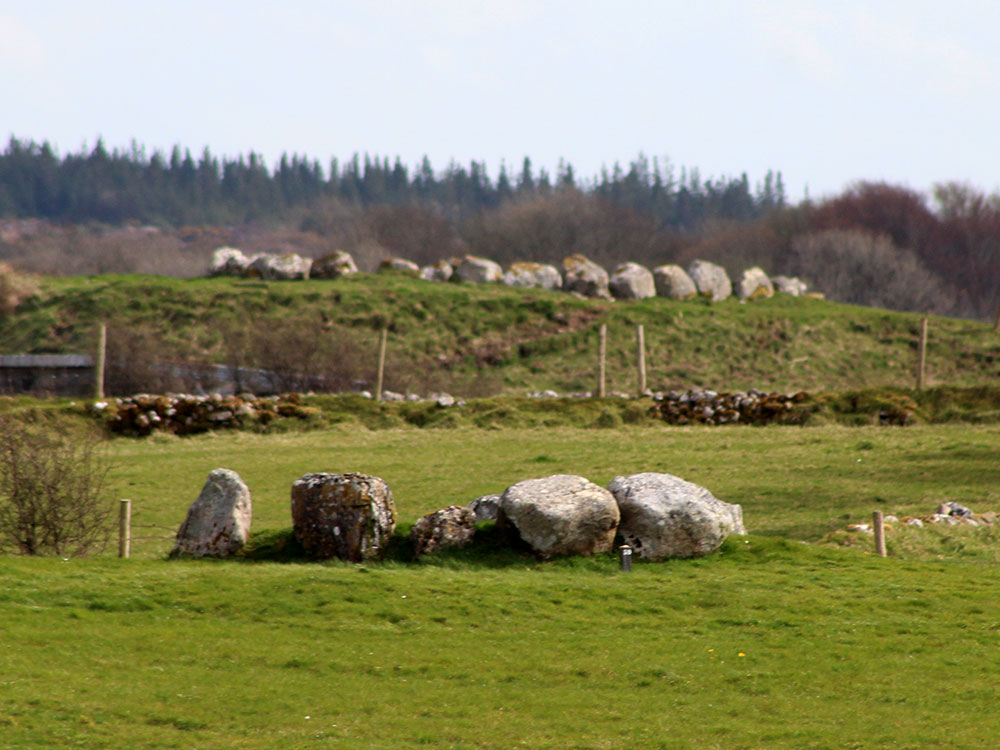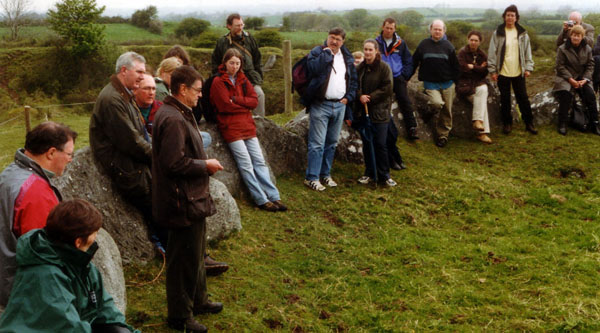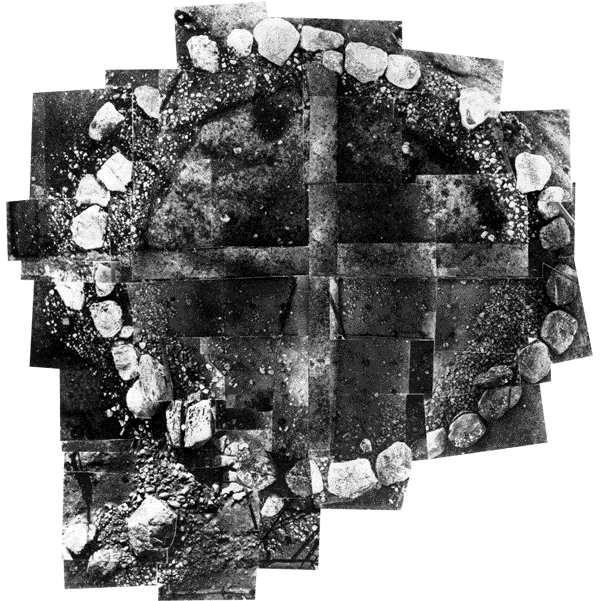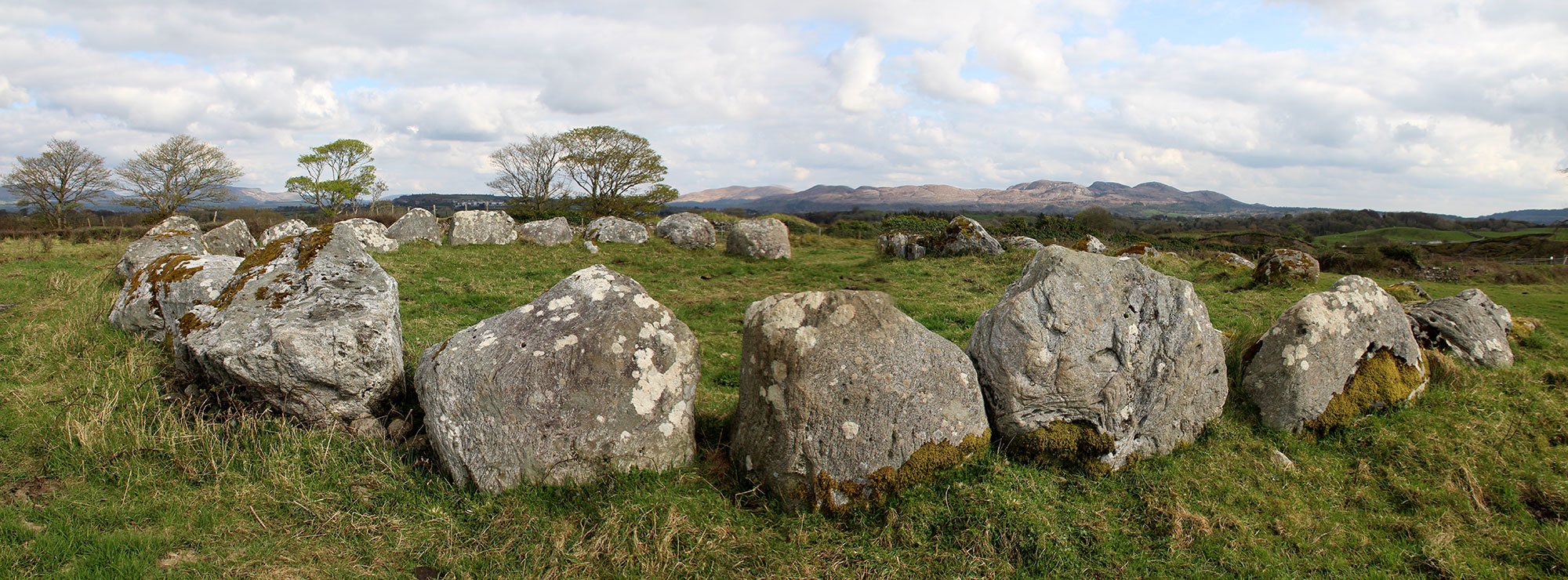Circle 26
Circle 26 is located outside the main group around the visitor centre at Carrowmore. It is just beside the road, in the same field as Site 27, as you approach Carrowmore from the south. The boulder circle is seventeen meters in diameter, and the stones were placed on a stone packing to keep the boulders level. The circle is complete, with all it's thirty-four stones present, but four of the stones have been displaced. One large stone, on the southeast side was removed and pushed back to make an entrance in the bronze age.

Several loose boulders around the circle may be the remains of a small dolmen which was dismantled during the remodelling. One of the loose stones is a split boulder, which was often the type of stone used for a capstone at Carrowmore.
This is one of several sites that was excavated by Burenhult's team in 1978 and 1979. They found that the site had been reused in both the bronze and iron ages.

Four postholes were found within the circle by the gap at the southeast. There was probably some kind of a wooden entrance structure built here. Furrows were found within the western side of the circle, and 10 pits which contained charcoal and burnt stone. A ditch was dug around the inside of the circle, but did not cross the gap in the southeast. These activities took place around 500BC.

An inhumation was placed in a pit at the centre of the circle around 90 BC. Finds from this circle include 1.5 kg cremated bone and an antler pin. Other materials found were more cremated bone, unburnt bones belonging to humans, cattle, hare and duck; a grinding stone, a potsherd, some blue glass beads and some burnt grains, which were mainly barley.
No. 26: - Borlase
Situated to the South of 25, and near the road, (dolmen-circle).
"This circle is nearly perfect, but wants the cromleac or kistvaen. The stones are large, and, as usual, placed quite close to each other. They are thirty eight in number, and the diameter of the circle is fifty feet."
- Petrie.


